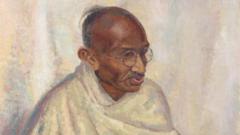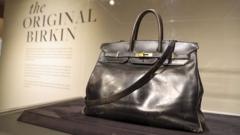A legal battle is brewing over a collection of Buddhist relics set to be auctioned by Sotheby’s, prompting India to demand their return. The controversial sale raises important questions about the repatriation of cultural artifacts taken during colonial times.
India Challenges Auction of Sacred Buddhist Relics from Colonial Exploration

India Challenges Auction of Sacred Buddhist Relics from Colonial Exploration
The Indian government is taking legal action to prevent the auction of cherished Buddhist relics that were removed from India during colonial rule.
A collection of exquisite jewels and sacred relics, purportedly taken from the burial site of Buddha in 1898 during British occupation in India, has sparked a significant legal controversy. The intricate artifacts, some merely millimeters in size, contain both ornate designs and spiritual significance, and are currently set to hit the auction block through Sotheby’s, an international auction house.
The Indian Ministry of Culture intervened recently, asserting that these relics belong in India, not in auction houses, and issued a formal legal request for their repatriation. Officials cite the need for these artifacts to be preserved properly and revered in a religious context rather than being viewed as mere commodities for sale.
The impending auction raises challenging questions about the status of cultural heritage items that were removed from their places of origin under colonial rule. As nations confront the legacies of imperialism, there is a growing movement advocating for the return of culturally significant artifacts to their home countries. This has been seen in various global contexts; American institutions have started returning artifacts to Indigenous populations, while Dutch museums have returned colonial items to former colonies like Nigeria and Sri Lanka.
Ashley Thompson, a Southeast Asian art professor at the University of London, remarked on the importance of reexamining how such significant cultural objects are handled. The discourse around ownership and value of cultural artifacts is evolving, and the outcome of this case could set important precedents for the treatment of similar items in the future.



















